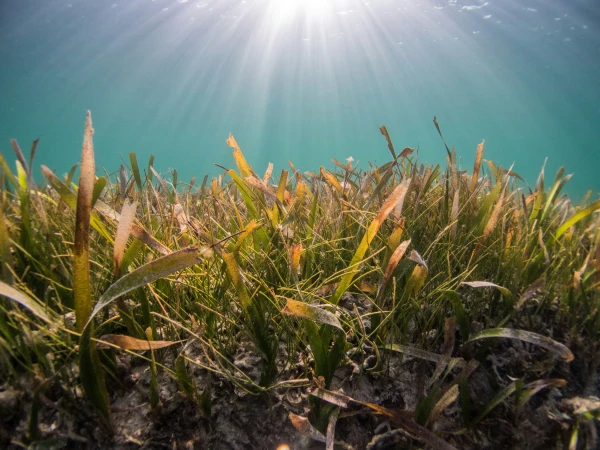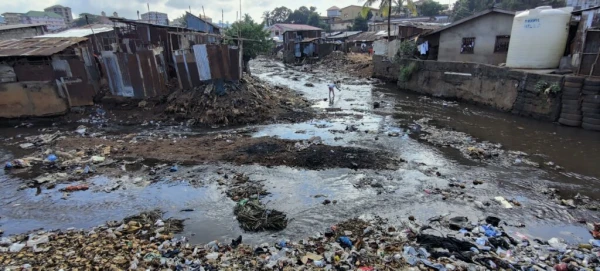Our Views
Credit Rating Agencies in Africa: Catalysts for Foreign Investment and Infrastructure Growth
- Introduction
Africa faces a massive infrastructure financing gap – the African Development Bank (AfDB) estimates the continent needs $130–170 billion annually for infrastructure, with a shortfall of around $100 billion each year. Mobilizing foreign investment, particularly through private-sector participation in infrastructure projects, is crucial to bridge this gap. At the same time, African nations contend with some of the highest borrowing costs globally, partly due to low sovereign credit ratings. Credit rating agencies play a pivotal role in shaping investor perceptions of risk and thus influence countries’ ability to attract investment for development. This paper examines the role of credit rating agencies in Africa over the past decade and how they affect foreign investment flows into infrastructure. We discuss how credit ratings function globally and in Africa, analyze trends in African sovereign ratings from 2015–2025, and explore the impact of ratings on foreign direct investment (FDI) and infrastructure finance. We then consider challenges such as potential rating bias, transparency issues, and limited coverage of African economies, as well as emerging opportunities like regional African rating agencies and governance improvements. Finally, we provide policy recommendations for African governments, private investors, and international stakeholders to leverage credit ratings as a tool to attract sustainable investment in African infrastructure.
2. Understanding Credit Rating Agencies: Global and African Context
Credit rating agencies (CRAs) are institutions that evaluate the creditworthiness of issuers of debt – including sovereign countries, municipalities, and corporations – and assign ratings that signal the risk of default. Globally, the credit rating industry is dominated by three major agencies often called the “Big Three”: Standard & Poor’s (S&P), Moody’s Investors Service, and Fitch Ratings. These agencies use letter-grade scales (such as AAA, BBB, or B, etc.) to indicate the relative risk of a borrower; higher ratings (e.g. investment-grade ratings of BBB-/Baa3 or above) suggest lower default risk, whereas lower ratings (speculative-grade or “junk” ratings) indicate higher risk. Investors rely on these ratings as a convenient summary of an issuer’s credit risk. For sovereign nations, ratings affect the interest rates countries pay on international bonds and influence investor appetite for a country’s debt and equity markets.
In the African context, the use of credit ratings expanded significantly in the 2000s and 2010s as many countries sought to tap global capital markets. In 1994, only one African country (South Africa) had a sovereign credit rating; by 2003, 13 African countries were rated after initiatives to facilitate ratings. As of 2023, 33 African countries have at least one credit rating from the Big Three agencies. The rating process involves CRAs analyzing a country’s economic indicators, fiscal and debt profile, external balances, and political and institutional factors. Sovereign ratings for African nations range broadly across the spectrum, but most are in speculative-grade categories. In fact, only two African economies – Botswana and Mauritius – currently maintain investment-grade sovereign ratings. Many African countries obtained their first credit ratings in the 2000s after implementing reforms and debt relief (e.g. under the HIPC initiative) to access international funding for development. Ratings are not only sought for sovereign Eurobond issuance; they also indirectly impact private sector access to international markets, as a sovereign rating often serves as a ceiling for domestic corporations’ ratings and influences country risk premiums.
Credit rating agencies function similarly in Africa as elsewhere – they periodically review countries and adjust ratings or outlooks based on changes in economic conditions or debt metrics. However, African officials have noted some unique contextual issues. For example, obtaining a rating can impose discipline and transparency on governments, but some countries have been reluctant due to cost or fear of a low rating. Those that do secure ratings often hope to “unlock funding from international and domestic markets to finance development needs”, including infrastructure. Private sector actors, such as project finance lenders, also look at sovereign ratings as a baseline for country risk. Therefore, credit ratings in Africa carry significant weight in shaping the investment climate.
As part of our ongoing commitment to supporting the development of robust financial ecosystems across the continent, Aninver Development Partners is proud to announce its participation as a sponsor of the Credit Rating Africa 2025 conference. Organized under the theme "Deepening Africa’s Financial Markets through Transparent Credit Ratings", the event will convene leading experts, policymakers, investors, and rating agencies in Cape Town to discuss how credit ratings can enhance transparency, attract private investment, and accelerate economic growth. See the website of the conference here.

3. Evolution of Sovereign Credit Ratings in Africa (2015–2025)
Over the past decade, African sovereign credit ratings have seen considerable volatility. In the mid-2010s, buoyed by economic growth and relatively low global interest rates, several countries saw stable or improving ratings. For instance, countries like Ivory Coast, Senegal, and Kenya managed to maintain B/B+ level ratings while accessing Eurobond markets, and others like Namibia and South Africa were still investment-grade in the early 2010s. However, a combination of shocks – the commodity price downturn of 2014–2016, rising debt levels, and later the COVID-19 pandemic in 2020 – led to a wave of downgrades across the continent.
By 2020, the fiscal stress from the pandemic and global recession resulted in widespread rating cuts. Many African nations experienced multi-notch downgrades or negative outlooks as debt-to-GDP ratios spiked and growth faltered. For example, Zambia became the first African sovereign to default during the COVID era (in late 2020), and rating agencies downgraded it to selective/default status. Ghana and Ethiopia similarly faced distress and restructuring, reflected in deep downgrades (Ghana’s bonds were downgraded from B ranges into CCC/C and eventually selective default). As a result, by 2022–2023, the average African sovereign rating had fallen to the single-B range (speculative grade). Indeed, African countries accounted for a disproportionate share of global downgrades. In 2023, African sovereigns saw 15 credit rating downgrades vs only 4 upgrades, constituting 43% of all sovereign downgrades worldwide that year. This bucked the global trend, which saw more upgrades than downgrades outside Africa.
There have been some positive developments more recently. As economies started recovering and commodity prices rebounded in 2021–2022, a few countries saw outlooks improve or ratings inch up. In 2024, S&P reported a “positive sovereign momentum” in Africa, with 11 positive rating actions (upgrades or outlook improvements) across the continent, more than double the previous year. For example, Benin, Togo, and South Africa received outlook boosts in late 2024 due to better fiscal prospects. Overall, however, the current status is that most African nations are rated below investment grade, and borrowing costs remain high. Out of the countries rated by at least one major agency, only Botswana (rated A-/A2) and Mauritius (around BBB-/Baa2) sit in investment-grade territory. Several large economies – Nigeria, Kenya, Egypt, Ghana – are rated in the single-B or CCC categories, reflecting significant perceived credit risk.
It’s important to note that not all African countries have international ratings; roughly 20 countries (often smaller or fragile states) remain unrated by the Big Three, which can itself be a barrier to accessing global capital. Those with ratings face continuous scrutiny. Sovereign ratings in Africa have thus evolved under the shadow of external shocks and domestic vulnerabilities, with the past decade seeing both a broad decline in credit quality around 2020 and early signs of stabilization by 2024. The trajectory of ratings has direct implications for investment, as the next sections will explore.
4. Impact of Credit Ratings on Foreign Investment and Infrastructure
4.1. Credit Ratings and Capital Inflows
Sovereign credit ratings heavily influence foreign investment decisions. Investors – whether foreign direct investors, portfolio bond investors, or infrastructure financiers – use ratings as a key risk indicator. A higher credit rating can instill confidence and attract capital, while a low or downgraded rating may deter investment or raise the cost of financing. Foreign Direct Investment (FDI), in particular, tends to be sensitive to a country’s perceived stability and risk. Multinational companies often consider sovereign ratings as part of their risk assessment for long-term investments. According to the United Nations Development Programme, “FDI is often deterred by low credit ratings”, as weak ratings make countries seem riskier than peers. Thus, African nations with poor ratings may struggle to attract diverse FDI beyond enclave resource projects.
Empirical data supports this link. Countries with stronger credit profiles generally capture more FDI relative to the size of their economies. For example, Mauritius, rated at the lower end of investment grade in recent years, has consistently high FDI inflows (around 5% of GDP in 2023) as it is seen as a stable, investor-friendly jurisdiction. Botswana (rated A-/A2) also attracts above-average FDI (~3–4% of GDP) due to its reputation for good governance and low risk. In contrast, larger economies with lower ratings like Nigeria (rated B-/B3 in 2023) see very low FDI inflows (around 0.5% of GDP in 2023), as investors remain cautious about macroeconomic and political risks. Figure 1 illustrates this trend for a selection of African countries, showing that those with stronger sovereign ratings tend to have higher FDI (as a share of GDP) than lower-rated peers.
Credit ratings affect not only the quantity of investment but also the cost of capital. Lower sovereign ratings lead to higher yields on government bonds, which can crowd out private investment by driving up local interest rates. African countries often face a steep risk premium: for instance, African Eurobond yields jumped so high in 2022–2023 that many governments were effectively shut out of international markets. This “ratings-inflated” cost of borrowing means fewer resources for development projects. Researchers have quantified that subjective elements in ratings (and possible bias) cost African governments an extra $24 billion in interest payments and $46 billion in foregone lending over the life of various bonds. Such sums could otherwise fund infrastructure or social services. Clearly, credit ratings have a profound influence on Africa’s financing landscape, shaping both investor behavior and debt sustainability.
4.2. Sovereign Ratings and Infrastructure Financing
Infrastructure projects – such as roads, power plants, and water systems – often require large upfront capital outlays that are recouped over long periods. Due to their long-term horizon and often regulated returns, infrastructure investments are highly sensitive to country risk. When a country’s sovereign rating is low, it implies higher risk of currency instability, political upheaval, or debt distress, all of which raise concerns that infrastructure revenues could be disrupted or that governments may not honor obligations (such as payment guarantees in a public-private partnership). Thus, credit ratings indirectly set the ceiling for infrastructure finance costs. If a country is rated B or below, private financiers will demand higher returns on infrastructure investments (if they participate at all), or will require credit enhancements like guarantees and insurance. For instance, after a series of downgrades in African countries in 2020–2022, many project developers re-evaluated their exposure: businesses involved in infrastructure “reexamined their exposure” to countries that had been downgraded and sought political risk insurance to mitigate their risks. In other words, a downgrade can directly chill the pipeline of bankable infrastructure projects by spooking investors and increasing risk mitigation costs.
Moreover, many infrastructure projects in Africa involve international lenders or bond financing (e.g. infrastructure bonds or project finance loans). These creditors often use the sovereign rating as a baseline. If the sovereign is below investment grade, it is rare for projects in that country to achieve investment-grade credit on their own, unless they have substantial external support. For example, an independent power producer project in a low-rated country might need partial risk guarantees from the World Bank’s MIGA or concessional tranches from development banks to become viable. In contrast, in higher-rated environments, private infrastructure funds or institutional investors (like pension funds) are more willing to invest without such support. Thus, improving sovereign credit ratings can lower the perceived risk and help attract private sector participation in infrastructure.
There is evidence that the perceived risk of African infrastructure is sometimes higher than reality. In fact, default rates on infrastructure debt in Africa are relatively low compared to other regions, and many projects perform reliably. Nonetheless, the country risk premium remains a big hurdle. A credible sovereign rating can enhance investor confidence by providing an independent risk assessment. As an example, Uganda and Rwanda obtained first-time sovereign ratings (B+ range) after years of reforms, which was seen as establishing a track record that helped attract funding for infrastructure and other sectors. Conversely, when Kenya’s rating was downgraded multiple notches in 2023–2024 amid fiscal and political strains, it complicated the government’s ambitious infrastructure PPP program by making financing more expensive and scarcer.
In summary, sovereign ratings and infrastructure investment are tightly interlinked. Higher ratings lower the cost of infrastructure finance and broaden the pool of willing investors, facilitating more projects through Public-Private Partnerships (PPPs) or other private channels. Lower ratings do the opposite – they raise costs and often force governments to rely on public or concessional funds for infrastructure. This dynamic is critical given Africa’s aforementioned infrastructure funding gap. The next section will present data comparing ratings, investment inflows, and infrastructure financing indicators across countries to illustrate these relationships.
4.3. Comparative Analysis Across Countries: Ratings, FDI, and Infrastructure Finance
To concretely compare credit ratings, foreign investment, and infrastructure financing, we consider several African countries with varying credit profiles. Figure 1 (above) already compared sovereign ratings with FDI inflows. We observe that Botswana (rated A-/A2) and Mauritius (BBB-/Baa2) receive significantly higher FDI (as % of GDP) than larger economies like South Africa (BB/Ba2) or Nigeria (B-/B3). Botswana and Mauritius, with stronger credit ratings, have consistently attracted investor interest in sectors like mining, tourism, and finance. In contrast, Nigeria’s low rating, driven by oil dependence and policy uncertainties, corresponds with very low non-oil FDI – many investors hesitate despite Nigeria’s market size. There are of course other factors at play (market size, natural resources, investment policy), but credit ratings emerge as a notable correlating factor in these examples.
Another angle is to look at infrastructure financing levels. One proxy measure is the share of GDP invested in infrastructure (public and private). Africa as a whole invests only about 3.5% of GDP in infrastructure annually, roughly half the required level of 7% to meet development needs. Within that, private sector participation is relatively small. Over 2015–2018, Sub-Saharan African governments and state-owned enterprises provided about 90% of infrastructure financing (through public resources and external loans/grants), with only ~10% coming from private investors. Figure 2 illustrates this breakdown. Countries with higher creditworthiness potentially have a higher private share in infrastructure finance, as they can attract PPPs and foreign capital. For instance, Morocco (rated ~BB+), one of Africa’s more stable economies, has been relatively successful in mobilizing private investment for renewable energy projects and toll roads. Meanwhile, in lower-rated countries like Mozambique or Republic of Congo (both in the CCC range after debt crises), infrastructure is almost entirely funded by governments or foreign aid because private investors are scarce.
We can also compare specific infrastructure indicators. For example, the number of PPP infrastructure projects or the amount of private capital commitments in infrastructure tends to be higher in countries with better ratings/governance. According to the World Bank’s Private Participation in Infrastructure (PPI) database, countries like Kenya and Morocco (mid-tier ratings) have seen dozens of PPP projects reach financial closure in the last decade (in energy, transport, etc.), whereas lower-rated countries like Sudan or Eritrea have virtually none. South Africa, despite its ratings downgrade, still attracted substantial private investment in renewable energy IPPs under its procurement program, thanks to relatively robust institutions. This aligns with findings that the “quality of institutions is the most important driver” of private infrastructure investment in Africa, and macro stability (which influences ratings) is also significant.
In sum, cross-country data suggest that credit ratings, investment inflows, and infrastructure finance outcomes are interrelated. Higher-rated African countries not only secure more FDI, but also are better positioned to engage the private sector in infrastructure development. Lower-rated countries remain heavily dependent on public funding or aid for infrastructure, which is often insufficient to meet their needs. These comparisons reinforce why improving credit ratings (or mitigating their constraints) can be a catalyst for unlocking foreign investment in African infrastructure.
Aninver’s involvement in the next Africa Credit Rating Conference underscores our belief that a stronger, more transparent credit rating environment is fundamental for mobilizing infrastructure finance, supporting Public-Private Partnerships (PPPs), and unlocking capital flows across Africa. Through our work in investment climate reform, infrastructure advisory, and PPP transactions across more than 66 countries, we recognize the pivotal role that credible credit information plays in fostering trust, reducing risk premiums, and enabling sustainable development. We look forward to engaging with key stakeholders during the conference to share insights and contribute to the advancement of Africa’s financial resilience. See the website of the conference here.

5. Challenges in Credit Ratings for Africa
5.1. Perceived Bias and Rating Accuracy
A recurring debate in the past decade has been whether international rating agencies exhibit a bias against African countries. African leaders and analysts have pointed out cases where ratings changes seemed overly harsh or not fully justified by economic fundamentals. For instance, during the global COVID-19 shock, almost all African sovereigns were downgraded or assigned negative outlooks, even those with relatively modest infection rates or fiscal deficits, leading some to argue that agencies overreacted due to pessimistic perceptions. Many African leaders argue the Big Three have a “negative bias” toward the continent, which “denies [African countries] access to essential financial resources.”. They cite examples where rating agencies have been slow to upgrade countries after improvements, yet quick to downgrade at early signs of trouble. This could contribute to an “Africa premium” – investors demanding higher yields than merited. A study by UNDP (2023) found that when compared to a purely quantitative risk model, actual ratings often underrate some African countries (and occasionally overrate others), implying subjective judgment calls are at play. These subjective elements – possibly stemming from analysts’ cautious outlook or limited on-the-ground insight (some rating analysts never visit the countries they rate) – can lead to ratings that “deviate from what the data would suggest.”
The economic implications of even a small bias are huge: as noted earlier, UNDP estimated about $75 billion in cumulative costs (in extra interest and lost lending) due to ratings subjectivity for a sample of African countries. Banks and officials also claim that risk perceptions can lag reality. For example, Ghana continued to be rated B/B- for years as its debt built up unsustainably; when it finally was downgraded to CCC and defaulted in 2022, it raised questions if earlier realistic ratings could have signaled problems sooner or allowed for course correction. Conversely, Nigeria has sometimes been rated similarly to peer countries despite much lower external debt, perhaps due to qualitative factors like governance concerns. Such inconsistencies fuel the sentiment that Africa’s credit story is not always told fairly by global agencies.
That said, the rating agencies themselves often counter that their methodologies are consistent worldwide and that low African ratings reflect genuine issues: high debt levels, low revenue bases, political instability, and external vulnerabilities. Studies by some scholars have not found evidence of systemic bias once you control for economic variables. The truth may lie in between – even without intentional bias, the lack of robust data and the higher uncertainty in African economies can lead agencies to adopt a conservative stance (a form of implicit bias). Additionally, most African countries are in speculative grade where investor risk appetite can change rapidly; agencies may err on the side of caution to maintain credibility with investors.
5.2. Transparency and Coverage Issues
Another challenge is transparency in the rating process and the limited coverage of African entities. Many African governments have criticized the Big Three for a lack of transparency in how decisions are made. Methodologies are public, but the weight given to various factors can feel opaque, especially when outlooks change quickly. For example, Kenya’s downgrade in 2024 by Moody’s cited fiscal concerns, but officials argued the move was premature as reforms were underway. This kind of disconnect can arise if there is poor communication between the sovereign and the agency, or if the agency relies on outdated data. Data quality is a known issue – timely and accurate economic statistics are lacking in many countries, which can lead to rating decisions based on incomplete information. Without improving data transparency (e.g., debt reporting, national accounts), African countries might continue to face a disadvantage in ratings.
Coverage is another issue: only 33 African countries have a sovereign rating . Those without ratings (often poorer or smaller states, or those in conflict) are practically shut out of international capital markets, as investors have no benchmark. Even within rated countries, coverage of sub-sovereign bonds or corporate bonds by CRAs is very limited in Africa (apart from South African corporates). This limits capital market development. There are a few African-based rating agencies (such as Global Credit Ratings (GCR) based in South Africa, Agusto & Co. in Nigeria, and others covering regional markets), but these remain lesser-known to global investors and sometimes perceived as not fully independent. Moreover, the fragmentation of regulatory regimes means these local agencies don’t have the same recognition outside their home countries.
Procyclicality is a structural critique of ratings relevant to Africa: agencies tend to downgrade during crises, which can exacerbate those crises by raising borrowing costs, a dynamic that some term a self-fulfilling prophecy or “ratings spiral.” African sovereigns that were downgraded in 2020 subsequently faced higher interest costs, worsening their fiscal situation and sometimes leading to further downgrades. Breaking out of this cycle is difficult without external support (such as debt relief or IMF programs, which in some cases helped stabilize ratings).
In summary, African countries face challenges with the global rating system: perceptions of bias, less-than-perfect transparency, and limited inclusion in the universe of rated credits. These challenges can undermine African nations’ efforts to present their true investment case to the world and attract the needed capital for infrastructure and growth.
6. Opportunities and Reforms
6.1. Regional Credit Rating Initiatives
In response to the concerns above, African leaders have advanced the idea of creating an African-owned credit rating agency. This culminated in plans by the African Union (AU) to establish the Africa Credit Rating Agency (AfCRA). The AfCRA, scheduled for launch in 2025, is envisioned as an independent, African-led CRA to “provide fair and accurate credit assessments for African nations, countering perceived biases of global rating agencies.”. According to the AU’s African Peer Review Mechanism, AfCRA will leverage context-specific knowledge, use Africa-based experts, and have better access to local data, which should yield more nuanced ratings. The hope is that an African agency could offer an alternative view on credit risk – one that might recognize improvements in governance or long-term potential that global agencies overlook – and thereby potentially improve investor perceptions. Many African policymakers see this as a way to “end the injustices” in the current system.
However, setting up a credible new CRA is a challenging endeavor. Past attempts in other regions (like a European rating agency post-2010) failed due to high costs and difficulty gaining investor trust. Estimates suggest $400–500 million in funding may be required to establish an agency with enough capacity and coverage. Additionally, to be truly credible, AfCRA must be seen as independent – free from political interference by member states – and meet rigorous analytical standards. There is momentum: backing from the AU and UNECA, discussions with private sector stakeholders, and support from UNDP for technical groundwork. If successful, AfCRA could complement the Big Three by either providing second opinions on ratings or focusing on areas the big agencies ignore (such as more African corporates or regional instruments). It might also foster competition that leads the global agencies to refine their methodologies for Africa. In the long run, an African CRA might help reduce the “perception gap” and save borrowing costs. At the same time, African governments should continue engaging with existing CRAs to advocate for greater transparency and dialogue – these relationships can be improved so that surprises (like abrupt downgrades) are minimized.
6.2. Strengthening Governance and Creditworthiness
Regardless of the rating agency, the surest way for African countries to attain better credit ratings (and thus attract investment) is to improve the underlying fundamentals that ratings evaluate. This means pursuing sound macroeconomic policies and strengthening governance. Many African countries have made strides in this area over the past decade, which in some cases translated into rating upgrades or outlook improvements. For example, Benin saw upgrades after implementing prudent fiscal management and diversifying its economy; Seychelles improved its rating by reducing debt levels and strengthening institutions. Key areas of focus include:
• Debt Management: Keeping public debt at sustainable levels and maintaining moderate debt service burdens. Several countries have instituted fiscal rules or debt limits to control borrowing. With debt vulnerabilities high post-COVID, strategies for debt reduction or restructuring (where needed) will be crucial to regain creditworthiness.
• Economic Diversification and Growth: Broadening the economic base and boosting growth can improve ratings by increasing resilience. For instance, Rwanda’s ongoing reforms and high growth in the 2010s contributed to an upgrade in 2019. Resource-rich nations can invest commodity windfalls into sovereign wealth funds or infrastructure to strengthen long-term fiscal health.
• Institutional Reforms: As the IFC’s analysis finds, institutional quality is a top driver of private investment – it’s also a factor in ratings (often captured in the “political/institutional assessment” notch). Tackling corruption, improving public financial management, and enhancing transparency will not only potentially raise ratings but also directly attract investors. Countries like Ghana and Kenya have improved their ease-of-doing-business environments in the past, which supported investment (though recent setbacks highlight the need for continuous governance improvements).
• Data Transparency: Ensuring that statistical data (GDP, fiscal accounts, external debt, forex reserves) are accurate and up-to-date can prevent rating agencies from making worst-case assumptions. It can also build investor confidence. International institutions and initiatives (like IMF’s enhanced General Data Dissemination System) support African countries in this area.
• Regional Cooperation: African regional bodies (e.g., ECOWAS, SADC) have considered regional guarantee funds or mechanisms to improve members’ credit profiles. Joint efforts, such as currency unions enforcing fiscal discipline (as in the CFA franc zone), can indirectly bolster ratings for all members by anchoring expectations of stability.
By addressing these areas, African nations can gradually improve their sovereign ratings. Even moving from a B to BB category can significantly reduce borrowing costs and open new investor pools (some global funds have minimum rating criteria). Improved credit ratings create a virtuous cycle: lower interest costs free up government revenue for investment, which further boosts growth and stability, leading to better ratings.
Another opportunity lies in leveraging credit enhancements and blended finance. Multilateral development banks have tools (guarantees, political risk insurance, first-loss capital) that can essentially upgrade the credit of specific projects or even sovereign bonds. For instance, partial guarantees on a bond can raise its rating above the sovereign ceiling, attracting institutional investors. There have been proposals for MDBs to do more of this in Africa, effectively “stretching” their balance sheets to crowd-in private investment. While not a permanent substitute for a higher sovereign rating, such tools can be pivotal for funding infrastructure in the interim.
Finally, better communication and engagement with rating agencies is an area of improvement. Governments that proactively engage – by meeting with analysts, providing forward-looking policy frameworks, and addressing concerns – often can achieve more nuanced outcomes. It was noted that sometimes rating analysts do not visit countries; inviting them, facilitating access to local perspective, and demonstrating commitment to reforms can influence the qualitative judgment in ratings.
7. Recommendations
Drawing from the analysis above, we propose the following practical recommendations for various stakeholders to enhance the role of credit ratings in attracting foreign investment to African infrastructure:
For African Governments:
• Enhance Fiscal and Debt Transparency: Governments should publish regular, comprehensive data on public debt (including any contingent liabilities) and fiscal operations. Transparency will build credibility with rating agencies and investors, reducing uncertainty premiums. For example, adopting IMF transparency standards can signal commitment to reform.
• Implement Prudent Debt Management and Reforms: Aim to maintain sustainable debt levels and diversify funding sources. Countries should avoid excessive non-concessional borrowing that could trigger downgrades. Implementing medium-term debt strategies and fiscal rules can help. In parallel, continue structural reforms that spur growth and export diversification – stronger economic performance is a key to ratings upgrades.
• Engage Proactively with Rating Agencies: Don’t treat ratings as static; maintain an open dialogue with the Big Three. Provide agencies with up-to-date information and early indications of policy changes. Invite them for country visits and address any misperceptions. By building relationships, countries can sometimes obtain rating upgrades or at least minimize negative outlooks through demonstrated commitment to stability.
• Leverage AfCRA Once Established: Support the development of the African Credit Rating Agency and use its ratings as an additional benchmark. Governments should, however, avoid pressuring AfCRA for unrealistically high ratings – its value will come from credibility. If a country disagrees with a global agency’s rating, a second opinion from AfCRA (if higher and justified) could be presented to investors for balance. Over time, if AfCRA gains acceptance, this could ease the “bias” issue and possibly improve countries’ access to finance.
• Promote Local Currency Financing: While not directly related to global ratings, reducing reliance on foreign-currency borrowing can shield countries from ratings downgrades due to currency risk. Developing local capital markets (local currency bonds for infrastructure) can attract domestic investors (pension funds, etc.) and mitigate the impact of foreign rating actions. Governments can facilitate this by providing robust legal frameworks for PPPs and infrastructure bonds.
For Private Investors and Lenders:
• Look Beyond Sovereign Ratings – Do Due Diligence: Investors interested in Africa should not rely solely on credit ratings, which might be conservative. Conduct on-the-ground due diligence for specific projects or sectors, as many opportunities in Africa have risks that can be mitigated or are counterbalanced by high returns. For instance, infrastructure assets like renewable energy in Kenya or transport in Morocco may offer solid fundamentals even if the sovereign rating is modest.
• Utilize Risk Mitigation Tools: When investing in lower-rated countries, private investors should make use of available risk mitigants. This includes political risk insurance (from agencies like MIGA), partial credit guarantees, and other credit enhancement products. These can effectively raise the project’s credit profile (one fund manager notes that such instruments “help improve the credit rating of the borrower”) and make investments viable that otherwise might be ruled out by low sovereign ratings.
• Partner with Development Finance Institutions (DFIs): Co-investment with DFIs can provide comfort that rigorous due diligence has been done and can bring in concessional or patient capital to difficult markets. DFIs often have preferred creditor status and deep knowledge of local contexts, helping private investors navigate risks that ratings alone may overstate. The presence of DFIs in a project can also sometimes result in better terms and lower financing costs, indirectly countering the high risk premium from sovereign ratings.
• Support Local Capital Market Development: International investors can also lobby for and support mechanisms that improve local credit ratings and market data. For example, engaging with local rating agencies for corporate or sub-sovereign bond issuance can build their capacity. Investors should encourage African issuers to get rated (even if initial ratings are low) as a starting point that can be improved, rather than avoiding ratings altogether.
For International Stakeholders (Multilateral Institutions, Rating Agencies, Donors):
• Facilitate Fair Rating Practices: The IMF, World Bank, and G20 should continue to engage with global CRAs on improving rating methodologies for developing countries. This could include incorporating development indicators or forward-looking assessments of reform efforts, to avoid overly procyclical ratings. International bodies can also encourage CRAs to increase their presence in Africa (e.g. more offices or analysts dedicated to African sovereigns) to improve understanding of local conditions.
• Provide Credit Enhancement and Guarantees: Multilateral development banks should expand programs that help raise the effective credit rating of African infrastructure projects. For example, guarantee facilities that wrap sovereign or project bonds to make them investment-grade could unlock large pools of institutional capital (insurance funds, global pension funds) that otherwise couldn’t invest due to rating constraints. Blended finance initiatives, where public or philanthropic funds take first-loss positions in investment structures, are another way to attract private investors into higher-risk countries by improving risk-return profiles.
• Support the African Rating Agency and Capacity Building: Donors and international organizations can provide technical assistance and funding to AfCRA’s establishment, ensuring it meets international best practices. Training programs for African officials on how to manage the rating process (some have been initiated by UNDP) are valuable so that countries are better prepared for rating reviews. Additionally, continuing to fund data initiatives (like AfDB’s African Financial Markets Initiative or UNECA’s data centers) will improve the information base that all rating agencies rely on.
• Promote Sustainable Investment Narratives: International stakeholders can help reframe the narrative around African investment risk. For instance, highlighting success stories where earlier pessimistic ratings proved too bearish can encourage a re-evaluation of risk perception. The media and research outlets (many of which international actors influence) should be encouraged to report Africa’s improving governance and young growth potential, not just debt problems. Overcoming negative stereotypes can gradually reflect in more balanced risk assessments by both agencies and investors.
By implementing these recommendations, the various actors can collectively ensure that credit ratings become a tool for unlocking investment rather than a hurdle. The goal should be to move Africa’s financing discussions from being dominated by risk and ratings concerns to being focused on opportunities and bankable projects. Improved credit ratings, or at least fairer ones, combined with targeted reforms and support, can significantly boost the continent’s ability to attract the foreign capital needed for transformative infrastructure development.
8. Conclusion
Over the last ten years, credit rating agencies have been both a mirror and a molder of Africa’s financial trajectory. They have reflected the continent’s economic ups and downs in their ratings, from the optimism of the mid-2010s to the downdrafts of the pandemic and the cautious stabilization of late. These ratings, in turn, have molded investor behavior – influencing who invests, at what cost, and in what sectors. A key insight from this research is the central role sovereign credit ratings play in either enabling or constraining infrastructure investment via the private sector. When ratings are favorable, African countries have tapped global markets to fund roads, power plants, and ports, integrating private expertise and efficiency. When ratings deteriorate, those opportunities recede, and nations fall back on scarce public funds.
To attract sustained foreign investment in African infrastructure, it is not enough to plead the continent’s case; African nations must continue to strengthen the fundamentals that underlie credit ratings while also working to reform the global rating architecture to better suit their realities. Initiatives like the African Credit Rating Agency offer a bold avenue to address perceived biases and reclaim the narrative of African creditworthiness. Meanwhile, ongoing improvements in governance, debt management, and transparency will over time be recognized in improved ratings from all agencies – as we have seen in pockets of the continent.
The stakes are high: billions in financing for development, millions of jobs, and the success of programs like the African Continental Free Trade Area all hinge on affordable, adequate infrastructure. Credit rating agencies, as gatekeepers to global capital, will continue to wield significant influence. This paper has shown that their role need not be viewed fatalistically; rather, with strategic action by governments, investors, and international partners, ratings can be improved and better managed. The result would be a virtuous cycle – stronger ratings, more investment, accelerated infrastructure development, and, ultimately, faster progress towards Africa’s development goals. In essence, credit ratings should be a means to channel foreign investment to Africa’s priorities, not an impediment. By aligning financial systems with Africa’s true risk and opportunity profile, the continent can attract the private capital required to build the modern infrastructure its people deserve. The coming years, with concerted reforms and new initiatives, could mark a turning point where Africa’s credit story becomes one of rising confidence and robust investment in its future.
About the AFRICA CREDIT RATING CONFERENCE 2025
The Africa Annual Credit Ratings Conference is a premier platform designed to foster dialogue among policymakers, rating agencies, financial institutions, and key stakeholders on the evolving landscape of credit ratings in Africa. With the increasing role of sovereign and corporate credit ratings in shaping economic policies and investment decisions, the conference seeks to address key challenges, opportunities, and innovations in Africa’s credit rating ecosystem.

References:
African Peer Review Mechanism (APRM). (2024). Africa Sovereign Credit Rating Outlook – 2024 Year-End Review. African Union, Addis Ababa.
Bloomberg. (2024, October 28). Ratings Bias Costs Africa Billions of Dollars, Standard CEO Says. Bloomberg News.
Brookings Institution. (2023). Making Africa’s credit ratings more objective. In Foresight Africa 2024 (Africa Growth Initiative, Brookings).
Chaucer Group. (2024). Press Release: Africa sees wave of credit downgrades last year – bucking global trend of net upgrades. Chaucer (https://www.chaucergroup.com).
Chinzara, Z., Dessus, S., & Dreyhaupt, S. (2023). Infrastructure in Africa: How Institutional Reforms Can Attract More Private Investment. IFC Working Paper, World Bank Group.
Ecofin Agency. (2025, Feb 13). AU Plans to Launch Its Own Credit Rating Agency in H2 2025. Ecofin Public Management News.
Economist. (2023, May 25). African governments say credit-rating agencies are biased against them. The Economist (Middle East & Africa section).
International Monetary Fund (IMF). (2023). Regional Economic Outlook: Sub-Saharan Africa (data on FDI and other indicators).
International Finance Corporation (IFC). (2023). Infrastructure Finance in Africa – Closing the Gap. Washington, DC: World Bank Group.
McKinsey & Company. (2020). Solving Africa’s infrastructure paradox. McKinsey Report.
ODI. (2023). “Give credit where it is due” – Africa’s fight with the Big Three rating agencies is overblown. Opinion article by Bright Simons, Overseas Development Institute.
S&P Global Ratings. (2024). Africa 2024 Credit Ratings Review: Positive Sovereign Momentum. S&P Global (Press Release).
UNDP. (2023). Lowering the cost of borrowing in Africa – The role of Sovereign Credit Ratings. United Nations Development Programme Africa, New York.
UNDP. (2024). Africa Credit Ratings Resource Platform Retrieved from undp.org/africa.
World Bank. (2023). Private Participation in Infrastructure (PPI) Database. Retrieved from ppi.worldbank.org (data on infrastructure projects).
World Bank. (2023). World Development Indicators. (Data on FDI inflows for African countries).










